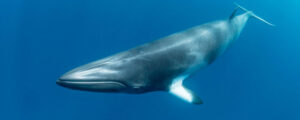
The movement of genetic material between organisms that aren’t directly related is a significant driver of evolution, particularly among single-celled organisms such as bacteria and archaea. A team led by researchers at Bigelow Laboratory for Ocean Sciences has now estimated that an average cell line acquires and retains roughly 13 percent of its genes every million years through lateral gene transfer. This equates to about 250 genes swapped per liter of seawater every day.
The new study, recently published in The ISME Journal, provides the first quantitative analysis of gene transfer rates across an entire microbiome. It challenges the rigid classification lines traditionally drawn between individual species, confirming that many transferred genes offer direct ecological benefits. This process enables microbes to adapt to new environments and equips them with valuable capabilities, such as accessing essential nutrients.
Unveiling the Mysteries of Microbial Evolution
“All the processes that microbes drive on our planet have evolved, and that evolution, to a large extent, is driven by lateral gene transfer,” said Bigelow Laboratory Senior Research Scientist Ramunas Stepanauskas, the study’s lead author. “We know in general how it works, but we had no idea if you take a drop of seawater, are genes being exchanged once a minute or once a year or once a million years? That was completely unknown — until now.”
Genes can be transferred laterally through various mechanisms, including the uptake of floating genetic material in the environment, direct transfer between cells, and the injection of foreign DNA into a host by a virus. Despite the complexity, scientists have struggled to quantify these processes due to the immense diversity of microbial life.
Advancements in Genomic Research
Traditional “evolutionary tree” approaches can study the transfer of specific, widespread genes—albeit a few at a time—but are impractical for studying an entire ecosystem. Similarly, metagenomics, the common method for studying microbial genomes, tends to exclude transferred genes that are rare or originate from unrelated organisms. However, advances in computational modeling and single-cell genomics have allowed scientists to begin answering these complex questions.
The team utilized genomes of 12,000 randomly-sampled microbial cells from the tropical and subtropical surface ocean, sequenced by Stepanauskas’s team at the Single Cell Genomics Center (SCGC). This unique dataset is one of the largest compilations of microbial genomes ever produced. They compared the distribution of shared genes in real-world data with a computer model that assumed genes could only be transferred vertically between parents and offspring, not laterally.
Implications for Ecosystem Understanding
“This project was an exciting opportunity to think differently about how to measure an essential yet elusive evolutionary process that shapes the microbial component of ecosystems globally,” said Siavash Mirarab, a professor at UC San Diego and a co-author on the study whose team led the development of the model.
The approach confirmed that most genes are exchanged between closely related cells, but not all. Some genes with significant ecological value can be successfully transferred between microbes as distantly related as humans are to kangaroos. For example, evidence was found of microbes acquiring novel genes enabling them to uptake new sources of phosphorus in the phosphorus-limited Sargasso Sea.
The findings also show evidence of the exchange of genes that encode ribosomal RNA, the cellular machinery responsible for protein synthesis. This was surprising given that those genes are often used as metrics for biological diversity, under the assumption they were not engaged in lateral transfer.
Future Directions and Potential Applications
In the future, the team hopes to expand this approach into new environments and tease apart differences between lineages, transfer mechanisms, and ecosystems. This work could have significant biotechnology implications by revealing how nature effectively and rapidly engineers cells for different environments and processes. To that end, SCGC is continually improving and scaling up its analytical capabilities to enable the large-scale studies required.
“Answering these questions may have become possible, but only if we can continue to improve our modeling toolkit,” Mirarab said. “I see this as just the beginning,” Stepanauskas added. “We finally have sufficient data to start doing this kind of quantitative analysis, but we still need to go much further to say how frequently specific kinds of microbes do it, what processes are involved, and how we can use this knowledge in environmental stewardship and bioeconomy.”
Funding for this work was provided by the Simons Foundation, National Science Foundation, and the National Institutes of Health. The study also features researchers from Woods Hole Oceanographic Institution, University of Pretoria, Wellesley College, and Massachusetts Institute of Technology.





